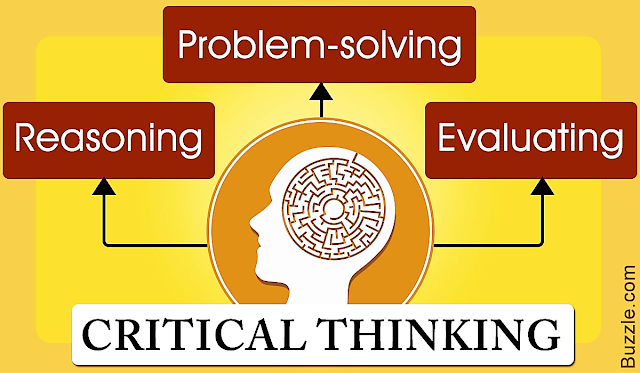In the previous chapter, we looked at the meaning and the various aspects of critical thinking and in this chapter; we look at the process that occurs during critical thinking.
Before we look at the very process itself, it is important for you to understand that this is just a generic structure and it can differ from person to person. This explanation is only to help you start with the process and allow you to implement it on a daily basis. It is only through regular practice that you will be able to become a bona fide critical thinker.
The first step involves recognizing the problem. When presented with a situation, it is for you to understand it and pinpoint the actual problem. Many times, the problem might not be apparent or it might have a deep rooted connotation. So you have to decide on what the problem truly is and, if it is not too apparent, then what you must do to find out. You might have to make use of certain tools that will be in your power such as vision, hearing, etc. Once you successfully recognize the problem, you have to prepare yourself for the next step.
Analysis
The next step of the process is for you to analyze the problem. You have to interpret it in a manner that will allow you to understand it thoroughly and also make way for you to dissect it. Only through dissection will you be able to make sense of it and thoroughly understand its various dynamics. If you simply identify the problem and start to apply solutions in general terms then it will be useless. You might waste time in doing so and so, it will be important for you to completely and thoroughly analyze and understand the problem. And this simply has to be a follow up to the first step, as it will be critical for you to follow a set pattern every single time.
Gather information
The next step will require you to gather all the pertinent information in regard to the problem. You might have to go to the extent of acquiring both primary and secondary data and then make a comprehensive set of data. The information must be pertinent to the situation and the problem and you must avoid collecting and gathering data that will not be of any use to the situation, thus recognizing data that is only vaguely related to it.
At the same time, you have to also try and collect lateral data that will allow you to question the truth and thereby strengthen your analysis. So don’t be shy to collect data that will be abstract in nature.
Logical analysis
Once you gather the information, you have to apply your mind to it and practically try and apply the solutions to the recognized problems. All the data that is collected needs to be interpreted thoroughly so as to allow you to arrive at feasible and situation-specific solutions. Again, the solutions must be specific and not generic. For example, if a baker wants to expand his business, then he must ideally invest in more equipment as opposed to expanding the size of his physical shop. All the data that is collected must be put to use as the dynamics of the solution can vary depending on the amount of data that is analyzed.
Arguments
One of the most important aspects of critical thinking is devising arguments. Arguments are nothing but a set of statements, with one being the solution and the rest being premises to it or mere assumptions. It is the critical thinker’s duty to surmise which statement is the solution and which one is a mere assumption.
Decision making
Once all the solutions have been obtained, after careful analysis and practical application, only the best solutions must be finalized. You have to make the decision of finding the best solutions and also use bona fide foresight. You have to be able to tell the consequences that your actions will have and know how effectively you will be able to solve the problem. You have to be able to draw conclusions and analyze them through a logical lens. As much as you would like to take a risk, it is better that you only choose the solution that will garner sure- shot results.
Dedication
Once you devise the solution to the problem, you have to be quick in implementing it. What is the point in wasting time, once you have the solution in your hands? You have to put all your solutions and conclusions to the test and not stop until the results are apparent and are satisfactory. If you stop half way, then you will end up losing out on the chance of successfully beating out a problem.
Question
Once the problem is successfully solved, you can start to create a data bank in your mind. But before you do so, you have to question yourself on whether what you implemented was the best solution and whether you are satisfied with the time that it took. If you are, then you can store the information as is, but if you feel that you could have gone about it in a smoother manner and in a quicker time, then you must alter the incident and store the data as an edited version.


No comments:
Post a Comment